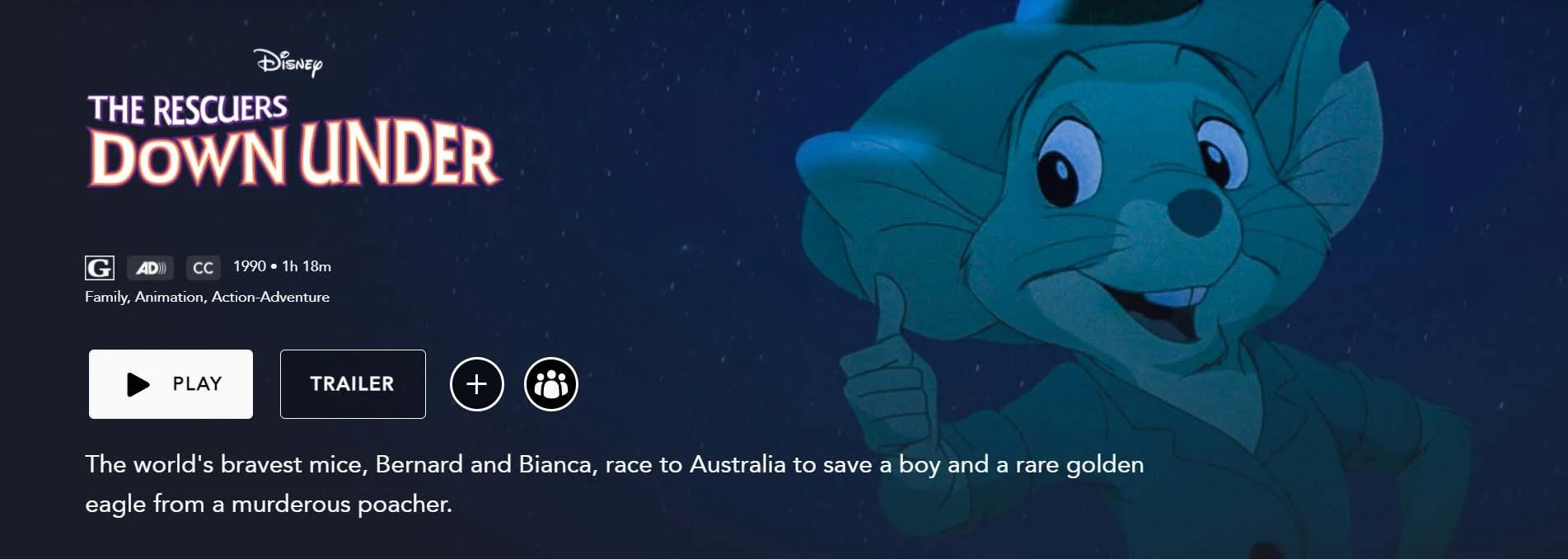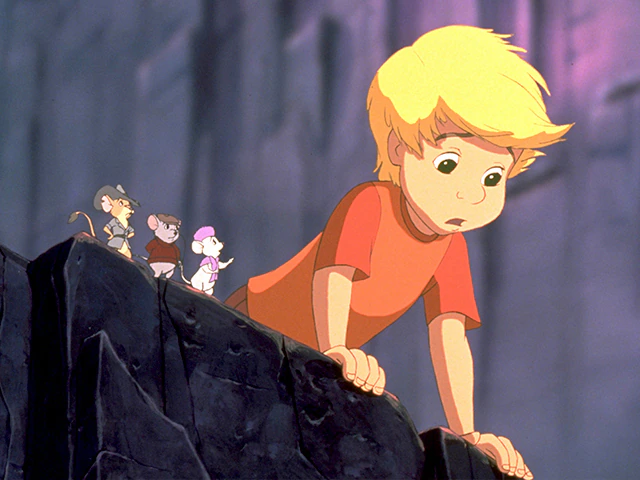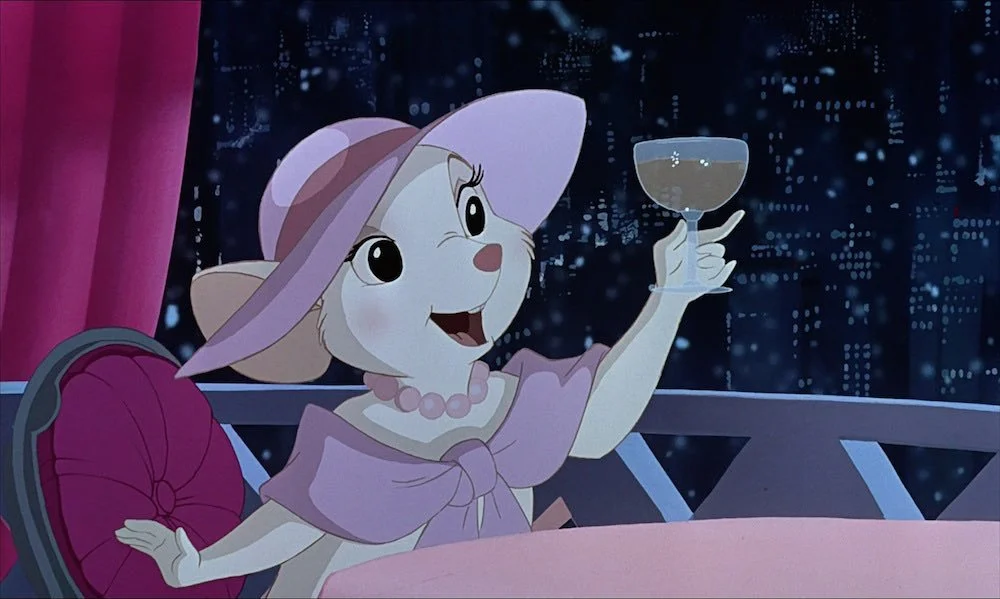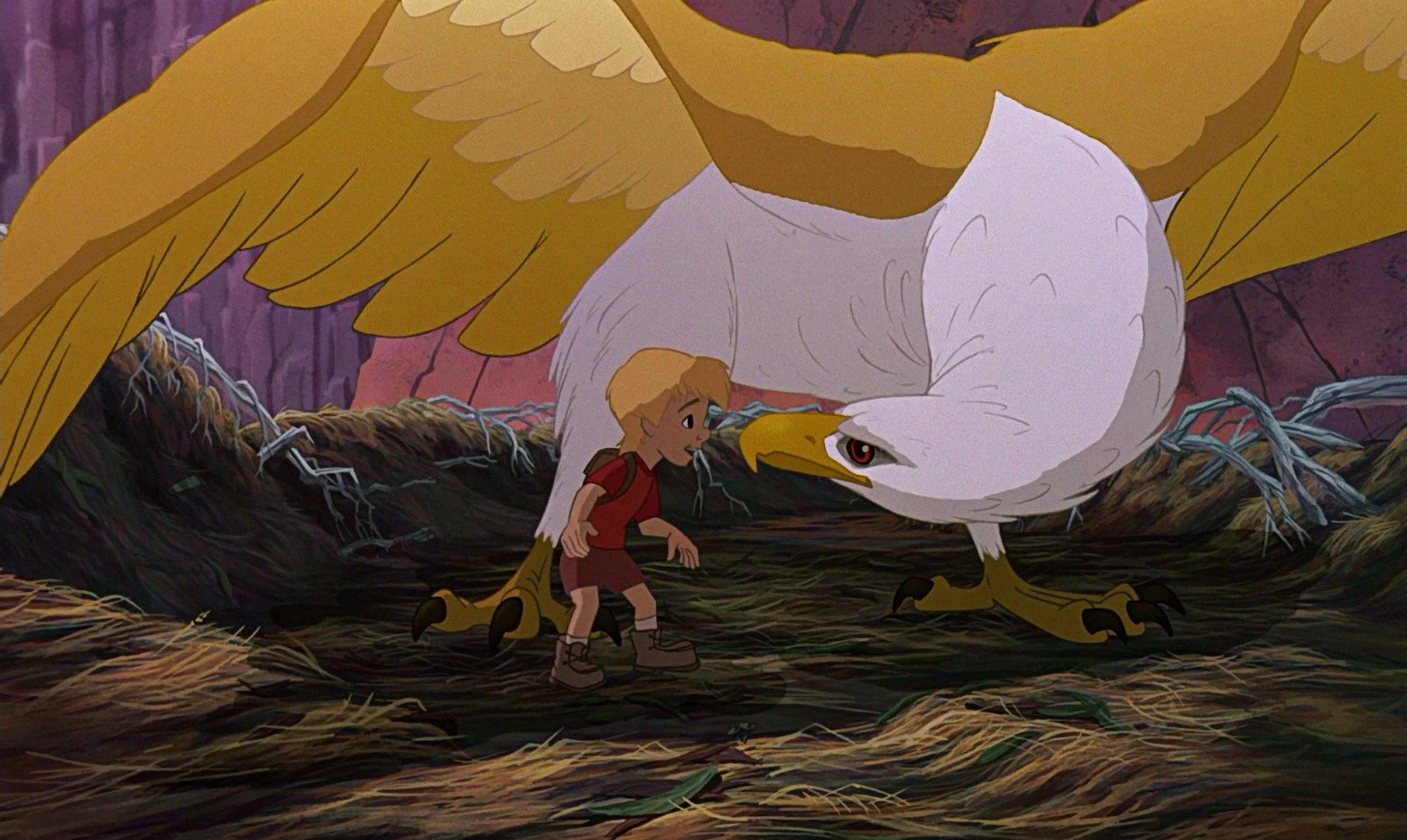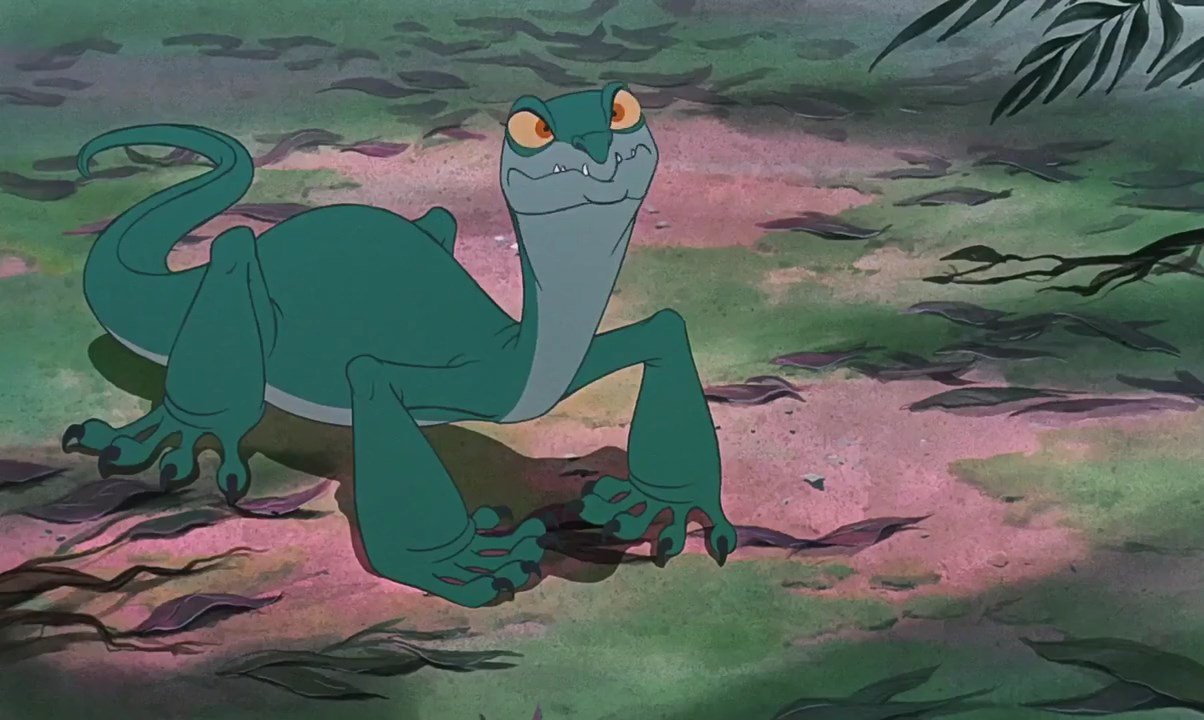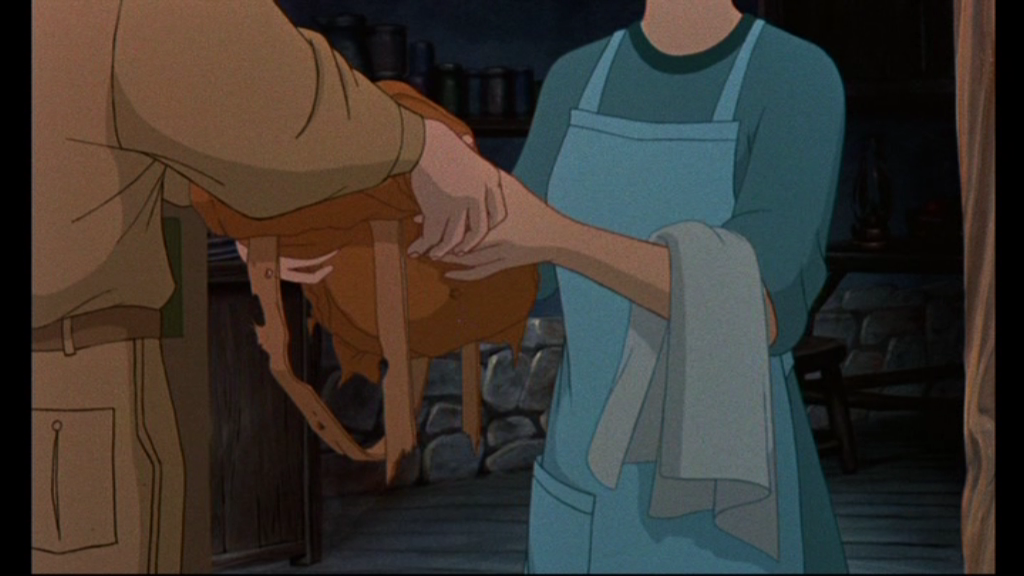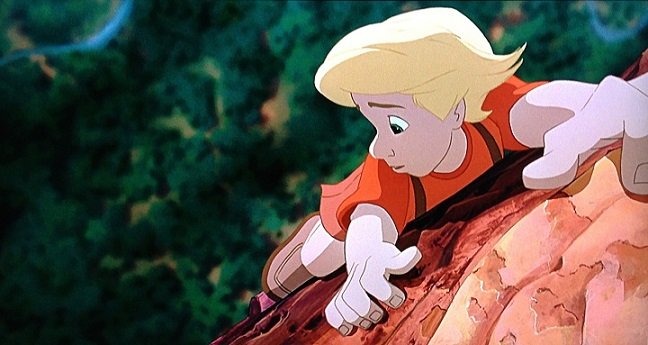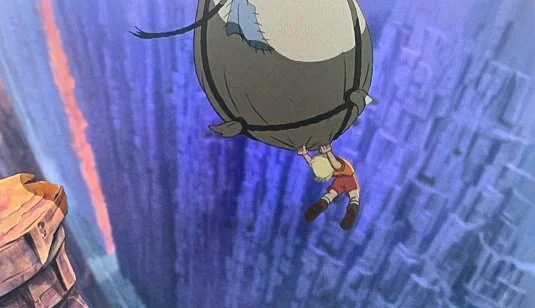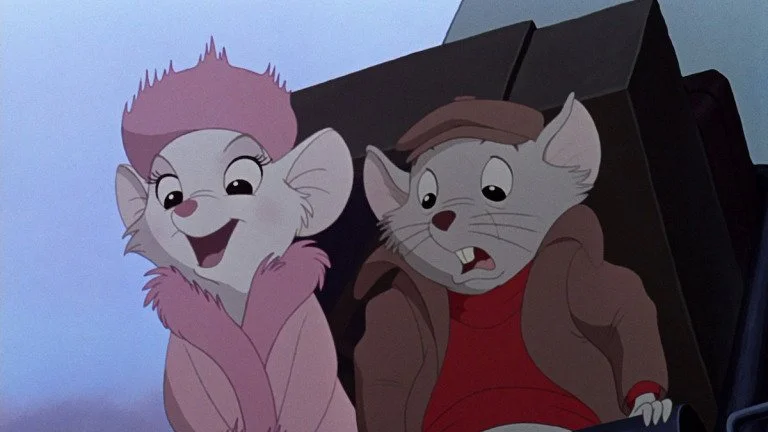Review: The Rescuers Down Under (DMC #88)
Welcome back, mates! Last night’s adventure took us to Australia in The Rescuers Down Under, the 88th film in our Disnerd Movie Challenge. Again, we are so happy we’ve reached the Disney Renaissance films! If you’re new to this film, we’ve got you covered with the synopsis. Everyone else, skip down to our review and join the discussion in the comments.
Synopsis
Deep within the Australian Outback, a young boy named Cody answers a call for help. The call is coming from Faloo, a female kangaroo, who asks him to save Marahute, a rare golden eagle who has been caught in a poacher’s trap. Cody is taken to the cliff where Marahute is trapped and he climbs to the top to rescue her. He uses his knife to cut her loose but this frightens Marahute and she accidentally knocks Cody off the cliff once freed. Marahute saves him just in time and as thanks takes Cody on an incredible flight before bringing him to her nest and showing him her eggs. She also gives Cody one of her feathers as a gift. Later, Cody spots a mouse caught in a trap set by local poacher Percival C. McLeach. Cody frees the mouse but falls into the trap himself and sets off McLeach’s alert. The mouse attempts to help Cody until it is forced to flee when McLeach arrives. Surprised to find a boy instead of an animal, McLeach helps Cody out of the hole. Cody instantly identifies McLeach as a poacher even though the man pretends otherwise. However, McLeach drops the act when he sees the golden feather. Realizing that Cody knows Marahute’s location, McLeach, who had already killed Marahute’s mate, kidnaps Cody and throws his backpack into a river full of crocodiles in order to convince the Rangers that Cody has been killed. As Cody is taken away, the mouse he freed rushes to an outpost manned by other mice and pleads for help. A telegram is sent out and soon reaches the Rescue Aid Society headquarters in New York City. The chairman shares the news of Cody’s kidnapping and suggests they send their best team—Bernard and Miss Bianca.
The two mice are out enjoying a dinner together. A nervous Bernard tries to propose to Bianca but loses the ring before he can do so. While Bernard covertly retrieves the ring, Bianca is informed of Cody’s kidnapping and immediately agrees to accept the mission. When Bernard returns to Bianca, he misunderstands her enthusiasm and believes she is accepting his proposal, only to be surprised back at the RAS headquarters when she accepts the mission. The mice go to Albatross Air to take a flight with their old friend, Orville. They learn that the business is now under the management of Orville’s brother, Wilbur. Having heard about the mice, Wilbur is excited to meet them and agrees to fly them immediately to Australia after hearing about Cody. When they arrive in Australia they are greeted by a kangaroo mouse named Jake. Jake is instantly infatuated with Bianca and tries to woo her, much to Bernard’s annoyance. Wilbur is taken to a hospital (an old ambulance) to fix his back which he threw out after attempting to help Bernard with the luggage. To his horror, Wilbur is tightly secured with ropes and forced to undergo some painful procedures so the mice doctor and nurses can help him. Meanwhile, Jake acts as a tour guide and helps Bianca and Bernard navigate the Outback, all while flirting with Bianca. When Bernard finally gets a moment alone with Bianca, he tries to propose to her again but is interrupted when Jake suddenly appears wrestling a water snake. Jake intimidates the snake into giving them a ride.
The Rangers find Cody’s torn backpack and return it to his devastated mother. The Rangers ultimately decide to call off the search. McLeach has Cody tied up at his lair. He tries to bribe Cody into telling him where he can find Marahute but Cody refuses to budge. In anger, McLeach locks Cody in a cage surrounded by many animals he has captured, including a fearful frill-necked lizard named Frank, a male kangaroo named Red, and a cynical koala named Krebbs. Cody befriends the animals, and Frank notes that in order for all of them to be saved they need to get the keys. Together, Cody and the animals use several of the objects in the room to snag the keys. Unfortunately, McLeach’s lizard, Joanna, catches them and disrupts the plan. Back at the hospital, Wilbur wakes up from sedation and makes an attempt to escape. As he tries to force himself through the window and the nurses pull him back, the force manages to fix his back (though he injures the doctor’s back in the process). Back at the hideout, McLeach deduces that the eagle’s eggs are Cody’s weak point. The next day, Frank unlocks the cage with his tail and gets the keys to unlock the cages, but Joanna finds him and chases him around the room while Cody tries to free the others. McLeach catches him before he can free any of the animals and he takes Cody outside, with Joanna following in their wake while all the animals are left unharmed. McLeach “frees” Cody, tricking him into thinking someone already shot Marahute. He lets Cody leave knowing that the boy will immediately go to the eagle’s nest to save the eggs. McLeach climbs into his truck and follows Cody from a distance. Meanwhile, Bianca, Bernard, and Jake watch this unfold. They jump onto McLeach’s vehicle to follow him.
Cody arrives at the nest and cares for the eggs, though saddened over Marahute’s “death.” The three mice climb down to the nest and join Cody, warning him that he was followed. Just then, Marahute flies back to her nest, much to Cody’s very short-lived joy. He shouts at Marahute telling her to stay away, but McLeach captures her. Cody, Bianca, and Jake all manage to follow, but Bernard is unable to make it with them. McLeach celebrates his success at capturing Marahute (along with Cody, Bianca, and Jake) and lowers Joanna down to the nest so she can eat the eggs. She finds them impossible to chew and instead just rolls them off the cliff. Luckily, Bernard hid the actual eggs before Joanna arrived, having tricked her by replacing them with egg-shaped stones. After Joanna and McLeach leave, Wilbur arrives at the nest and Bernard persuades Wilbur to sit on the eggs to keep them warm while Bernard goes after McLeach. While trapped in McLeach’s cage, Cody begins to lose hope and Bianca reassures him that Bernard will come to save them. Jake assumes Bianca is bluffing, but she tells him that she wasn’t; if anyone can help them now, it’s Bernard. Bernard does his best to follow the tracks and eventually enlists the help of a wild razorback by taming it with the same technique Jake used to tame the snake. McLeach takes Cody to the edge of a river near a waterfall, intending to feed him to crocodiles. Bernard arrives and steals the keys to the truck, shutting off the power and keeping McLeach from dropping Cody into the river. Bernard tosses the keys to Bianca and Jake so they and Marahute can get out of the cage while Bernard runs from Joanna. McLeach decides to shoot the rope holding Cody and Bernard causes Joanna to slam into McLeach, sending them both into the river. The rope holding Cody breaks thanks to McLeach’s shots, sending him into the river as well. Bernard goes after Cody and desperately tries to keep him him from flowing downstream. The crocodiles swim after McLeach, who fights them off with his rifle. However, while Joanna flees to the riverbank, McLeach taunts the crocodiles and forgets about the waterfall. He tries to swim against the current but is washed over the edge. Meanwhile, the tree branch Bernard is holding onto breaks, sending him and Cody over the edge of the waterfall as well. Bianca and Jake free Marahute, who flies after Cody and Bernard, saving them in the nick of time. Marahute soars into the sky with Cody and the mice where Bernard finally proposes to Bianca before any more incidents occur. Bianca happily accepts and Jake tells Bernard, “well done, mate.” The group flies off to Cody’s home. Back at the nest, Wilbur is still sitting on the eggs and is dismayed when they begin to hatch. He thinks they’re cute at first, until one of them bites him.
Thoughts Before Watching
Megan: I love this movie! Honestly, it is the superior Rescuers movie. Not to say I don’t enjoy The Rescuers, but The Rescuers Down Under is a sequel that really outshines the original. I love the humor of it, the quotable lines, the adventurous Australian outback…it’s so fun! Also, something I must look into: is that giant golden bird in this movie a real animal? Like do those really exist (or did they exist before going extinct)? Making a note to do some research on that. This isn’t a film I go back to re-watch often. In fact, I probably haven’t seen it since I watched it on VHS. Still, I’m looking forward to revisiting this one.
Kevin: Here’s a slightly “silly Kevin” type story; when I was a little kid, I once thought the original movie was actually a low-budget sequel similar to some of direct-to-video films like The Return of Jafar. Somehow, the fact that the actual sequel had the add-on of “Down Under” didn’t tip me off. I definitely agree that the sequel is better than the original. Basically, it takes what made the first one good and makes it even better. It’s sometimes known as the black sheep of the Disney Renaissance, and I can sort of see why that is when it’s compared to the rest of the films in the era. I saw this just over a year ago while we were already working on this blog, so I’m not expecting my thoughts to differ too much.
Thoughts After Watching
Great plot with fun characters
Megan: Like Kevin said, this film really takes what worked in The Rescuers and takes it up a notch. The plot of the story is solid, even with the way it switches between the dual stories of Cody and Bernard. We’re never left wondering “whose story is this?” because we’re so invested in all the characters and their roles in this journey. Plus, unlike some of the films we’ve seen before where we couldn’t tell whose story it was because the character arcs were so wonky, this film gives both Cody and Bernard complete character arcs. They both have their own “call to adventure”: Cody is summoned by his animal friends to help Marahute and Bernard is (somewhat unwittingly) called to co-lead a rescue mission with Miss Bianca. Both characters share a “false defeat” midpoint, with Bernard once again failing to propose to Miss Bianca and Cody finding himself in a cage alongside animals McLeach has captured. The “all is lost” moment is interesting here, because Cody truly believes all has been lost—he and Marahute have been captured, and it seems Marahute’s eggs are done for as well. Bernard, meanwhile, doesn’t truly hit an emotional low point, or at least not in the same way. His “all is lost” moment is when he realizes that McLeach has captured Miss Bianca, Jake, Marahute, and Cody and there’s no way to catch up to the vehicle that’s already miles ahead of him. It’s short-lived, though, because he immediately tames a razorback to carry him the rest of the way. This leads into the end of Bernard’s arc where he becomes the true hero of the story, defeating the villain and (mostly) rescuing Cody. The end of Cody’s arc is slightly less satisfying because he becomes the character in distress who needs to be rescued, but it’s because he rescued Marahute and a little mouse at the beginning of the story that Bernard, Bianca, Jake, and Marahute are there to rescue him at the end of the story. Had Cody never helped those animals in the first place, sure, he might not have been kidnapped by McLeach, but he wouldn’t have been rescued from McLeach, either. Unlike the tired “damsel in distress” trope where a female character is placed in distress so the male hero can save the day, Cody has slightly more agency in that his rescue comes as a direct result of his actions at the beginning of the film. Even though Cody’s distress still serves to make Bernard a hero, it was Cody’s kindness to another mouse that brought Bernard to him in the first place, so really, Bernard is just returning the favor for all of mouse-kind.
Bernard gets a bit more development—but does it rely on tropes?
Kevin: One of the things Megan pointed out in our review of The Rescuers was that the male characters didn’t have the greatest representation and appeared to be written as weak in order to make the female characters appear strong. This was something I also noticed but hadn’t commented on. In particular, I did notice how Bernard was portrayed in that film. I didn’t really take too much issue with this even though I agreed that he could have been written better. With this sequel, I think the writers did a good job furthering Bernard as a character and making him more interesting. He begins the movie rather like how he was before—nervous and maybe a bit neurotic, yet he also has a sense of self-assuredness lying underneath. I was glad that the writers at least did away with his superstitious nature, which from an in-movie perspective I will chalk up to the passage of time and Bernard having grown a bit during those unseen missions.
Megan: After all, The Rescuers was Bernard’s very first mission. He seems like more of a seasoned pro by the time this movie starts.
Kevin: Where this movie takes Bernard up a level is the newfound confidence he displays towards the last act of the film. He convinces Wilbur to babysit the eggs while he goes after his friends. He shows the ability to pick up techniques when he tames the razorback using the same method Jake used earlier. And it’s notable that he’s the one who ultimately risks his life in the final act trying to save Cody’s. I am not downplaying the roles Bianca and even Jake played, but just noting that this was the route the writers went. Granted, there is a slight problem here because it relies on a tired trope of forcing Bianca to become a bit of a damsel in distress while she waits for Bernard to rescue her. An argument could be made that Bernard’s confidence is spurred by Bianca’s capture since the best examples we see of his newfound confidence are after this happens. This, too, could be seen as a problem because it would be relying on an outdated notion that men/male characters display their greatest heroism when a woman/female is in trouble and in need of rescue. I am no writer, but I can imagine that this might be a tricky thing to tackle. It’s certainly true that people are often spurred into action when their loved ones need help, so it’s not unnatural that Bernard is exhibiting this behavior. How does one write situations like this while avoiding these tropes? My thought is that although this movie does put more focus on Bernard, Bianca isn’t helpless overall and remains an active participant throughout the mission (although I did notice that a lot of the later actions she participates in are initiated by male characters (most especially Jake) instead of Bianca herself, so there’s certainly an unequal playing field there). Still, on the whole, I think the actions Bernard and Bianca take in this film are a bit more equal than they were before. I would be very curious to hear what Megan’s thoughts are here. If anything, perhaps the greatest disservice done to Bianca is that she has little to no character development in this movie. She is basically the same mouse as she was in the last, with the main difference seeming to be that she is at least more experienced and confident in her role as a field agent. With that said, though, it seems clear this movie wanted to put Bernard front and center. The film is basically bookended by his proposal attempts. He fumbles the first attempt, but once he finishes his incredible adventure with Bianca he finally finds the courage and confidence to successfully propose to her. I wonder how much of this development was based on some old views on heroism, but I still appreciate that the direction the writers took with Bernard.
A plethora of male characters makes for a Bechdel test fail
Megan: I have to agree with you, Kevin. Bianca doesn’t get much chance to shine in this sequel. The Rescuers may have passed the Bechdel test with flying colors for all its female characters (Penny, Madame Medusa, and Miss Bianca), but The Rescuers Down Under never stood a chance. From the cast of characters alone, this sequel only had three named female characters: Miss Bianca, Marahute, and the female kangaroo, Faloo. Marahute never talks, so there was no way she could have had a conversation to qualify for a Bechdel test pass. Faloo only speaks to Cody in the beginning of the film, then we never see her again, so Bianca is left without any female characters to talk to. The only time she comes close is when she and Bernard drop off Wilbur at the hospital run by a male mouse doctor and a team of female nurse mice, but Bianca never speaks to those nurses and the nurses only speak to the doctor, not each other. Then, of course, there’s Cody’s mother. Sure, she speaks a few lines, but she doesn’t have a name—and we never even see her face! I’m sure this was done to save the animators some time, but never showing us the face of the only human female character in the entire film comes off a little sexist considering the plethora of male characters, human and animal, populating this film. Did all those captive animals in McLeach’s dungeon have to be male? Couldn’t at least one of them have been female? Oh, right, I forgot, Joanna counts as a named female character, too. But again, she doesn’t really talk, and when she does “speak” she is in conversation with McLeach, not Miss Bianca. And then there’s the small detail that she’s voiced by a male voice actor.
Megan: In a sense, females have been partially erased from this movie. Think about it: Cody’s mom never shows her face; Marahute never speaks; Joanna babbles but doesn’t really make coherent words; Faloo is seen and speaks, but I bet if you hadn’t watched this movie in a while you probably forgot Faloo was even in this movie (and you probably didn’t know her name was Faloo). Even the nurse mice, though they’re women in a STEM field, are effectively erased because they all look identical—there is no differentiating between one nurse and another. Miss Bianca, on the other hand, is Bernard’s love interest and the object of his desire, so she has ample screen time to be seen and heard. It’s no mistake that she’s the most attractively drawn female character and the most eloquent female speaker. However, she doesn’t really have very much to say. Unlike the previous film where she was the one who chose to go on the rescue mission and chose Bernard to accompany her, this film puts her in a backseat role. Sure, she still accepts the mission on behalf of her and Bernard, but that’s it. The only other choice we see her make is at the end of the movie when she says “yes” to Bernard’s proposal. Basically, Miss Bianca is there to look pretty and say just enough for us to understand why Bernard wants to propose to her and why Jake wants to flirt with her. That’s it. It’s quite a switch considering the books that inspired The Rescuers films in the first place featured Miss Bianca as the primary protagonist.
What’s Cody’s workout regimen?
Kevin: Like Ariel, Cody is shown to have some ridiculous strength and athleticism. From what I could find online, Cody is said to be around 8 to 9 years old. If this is true, his abilities are even more astounding if only because he accomplishes so much for being so young. He manages to climb straight up a tall cliff so that he can free Marahute, and all while not using any sort of rock-climbing equipment. Later on we see him jump off the edge of the alcove where the eggs are and successfully grab onto a bit of tarp or whatever it is that’s ensnared Marahute. Keep in mind, Cody had to grab enough of that material to hold on tightly and make sure the force of his jump didn’t cause him to let go and fall to his death. (Side note: when I first wrote this section I thought he grabbed the rope, but if you look at the actual frames he clearly catches the fabric instead of the rope itself. In a following shot he is shown holding the rope, so this might be an animation error. I’m going with what the first shot actually showed.) Just a bit later, he manages to hang upside down on the actual rope by just his foot, albeit with some help from Bianca and Jake. The feats Cody exhibits are amazing and actually help set up some of the tension felt in the movie. Cody could have lost his grip in any of the above scenarios and been done for. The amount of strength, stamina, good footing, and mental fortitude needed to do these things are not at all easy, and yet, like Ariel, Cody makes it look easy. The movie’s setup implies Cody has been doing this sort of thing for some time, so it’s only natural that it comes rather easy to him.
I realize this is animation and things are often simplified to where characters are able to pull off incredible feats for the sake of story, but I think this shouldn’t necessarily be overlooked. I think this is actually part of Cody’s character and helps us understand who he is: a compassionate boy who cares about the well-being of the animals on the Outback and who hones his body to the best he can as part of his desire to help. Also, a character like Cody (at least when he grows up) would totally kill it on Australian Ninja Warrior. (This genius comment comes from my twin brother, and I only wish I had thought of it myself.)
Cody is a hero to root for
Megan: I’m with Kevin on this—it’s totally awesome that this kid is performing these death-defying feats of physical strength throughout the movie. It’s part of what adds to the adventure of his story. I’m also a fan because Cody is an animal activist. He might just be a kid, but he has his own network of animals to help him rescue other animals from poachers. He doesn’t just sit at home and say how bad poachers are—he does something about it. He’s been actively freeing animals from poachers’ traps for a long while before we meet him in this film, and he’s good at it. When he comes face to face with the poacher McLeach, Cody is savvy enough to see through McLeach’s lies, and he’s fiery enough to stand up to the poacher and tell him what he’s doing is wrong. Of course, that’s also what gets Cody into trouble, but a story wouldn’t be fun if the protagonist didn’t get into some kind of trouble. After growing up with films like Bambi, The Fox and the Hound, and The Rescuers Down Under that present hunters and poachers as evil, is it any wonder millennials are more willing to fight to protect nature?
When does this sequel take place?
Kevin: I don’t actually need this answered; it’s really just a throwaway curiosity I have about the film. At the very least I imagine this movie takes place several months to a year later than the events of The Rescuers. It definitely can’t have been immediately after the first film. The last scene of The Rescuers shows Bernard and Bianca flying on Orville while heading out to their next mission, but that clearly doesn’t line up with the events going on at the beginning of the sequel. And of course, there is the fact that Bernard plans to propose to Bianca, which I’m sure implies they have been together for some undisclosed amount of time. The chairman of the RAS also says the mission to Australia requires the “very finest.” I doubt that the mice’s first successful mission in the last movie would have elevated them to this honor, so they had to have completed several more missions together. Lastly, I am curious how long it has been since they last saw Orville; the sequel makes it seem like they haven’t visited him in quite some time based on their surprise that he no longer operates Albatross Air. These aren’t things that take away from my enjoyment in the film in the slightest, but they are interesting questions I had while watching.
Is Marahute based on a real bird species?
Megan: Time to answer the question I had going into this re-watch: does a giant golden eagle like Marahute actually exist, or did it ever exist? The short answer is…no. At least, not at that scale. Supposedly the animators drew their inspiration for Marahute from both the wedge-tailed eagle (the largest bird of prey native to Australia) and the white-bellied sea eagle (source: Disney Wiki). However, both those eagles are substantially smaller than Marahute. The largest bird of prey that previously existed in New Zealand is the extinct Haast’s eagle, yet even this bird likely wasn’t large enough to carry an 8- or 9-year-old boy on its back (although, it was strong enough to kill the extinct flightless moa, which could be up to 12-feet tall and weigh more than 500 pounds, so maybe it could have carried a human child in its talons).
A worthy inclusion to the Disney Renaissance
Kevin: When looking at the Disney Renaissance on its own, I can understand why The Rescuers Down Under could be seen as the weakest film of the era. What I do not understand or agree with its total exclusion from the era on the part of some folks. No other era of Disney animation has ever, to my knowledge, excluded a film from the list for whatever crappy reason. I forget where, but I once read a review that suggested the movie should not be considered part of the Renaissance because it isn’t a musical. I don’t see why that matters—and besides, by that logic, then Tarzan should also not be included because it isn’t technically a musical according to most definitions, and yet Tarzan is always included in the list. Frankly, if there’s going to be any comparison between this movie and other Disney films, it should be against its predecessor. After watching this movie and thinking about our viewing of The Rescuers from earlier this year, one of the first things I noted was how much lighter in tone the sequel was. That’s not to say it doesn’t have any heavy moments, but it’s far less dreary than its predecessor. The original movie was more sad in tone; that tone was set not only by the plot of rescuing Penny from Madame Medusa, but also by Penny’s desperate desire for a family. Even the music and score was more somber. In The Rescuers Down Under, the tone is one that embodies pure action-adventure from the music to the setting to the characters.
(Megan: I second that! The music is SO GOOD! Seriously, if it’s been a while, go and listen to it again. It’s more iconic than either of us realized.)
Kevin: Unlike Penny, Cody already has a family in the form of his mom. Though only seen twice, and though never with her full face and therefore no facial expressions, there is not a single moment where Cody feels a desire to belong. In that sense, I will give The Rescuers a point for more emotional heartstring-tugging compared to its sequel. That said, I still think The Rescuers Down Under is the superior film for its better character development and story. Plus, I have to give hats off to its animation—some of those CGI sequences are so gorgeous and are truthfully some of the best to come out of the Disney Renaissance. I can only presume that audiences might have been surprised at what this film offered after seeing The Little Mermaid. Maybe this is the movie that should have bridged the gap between the Bronze Age and the Renaissance instead of Oliver and Company, but I’m personally okay with its placement.
